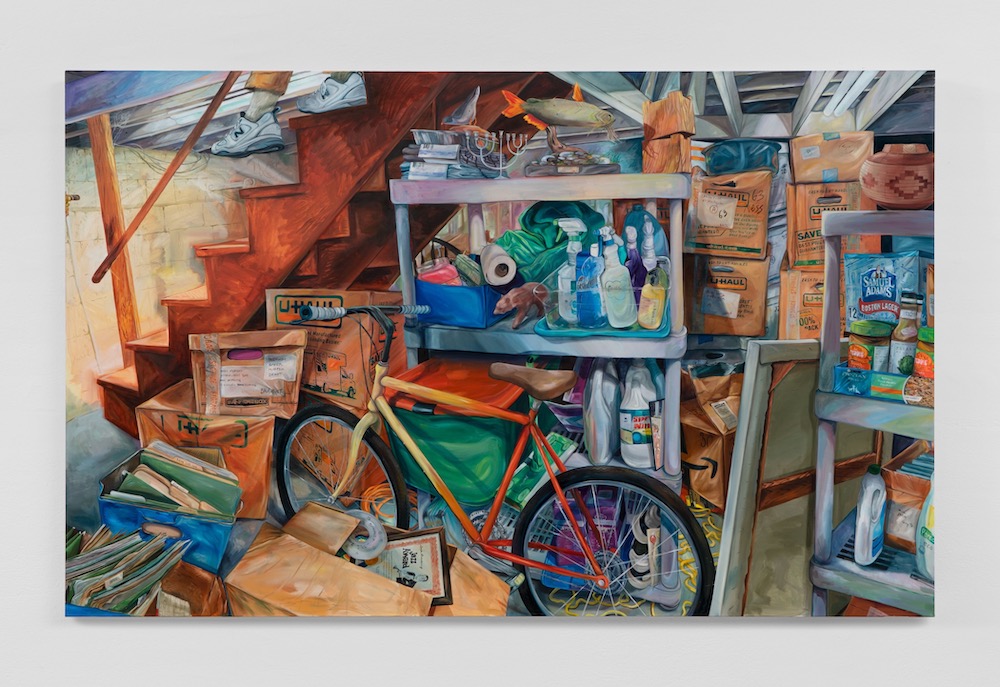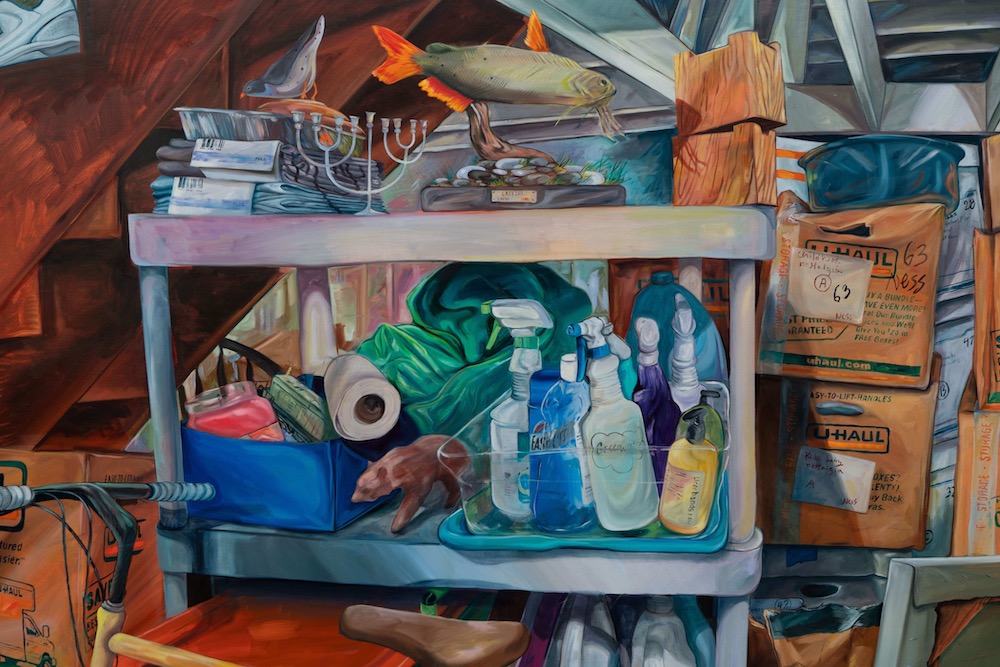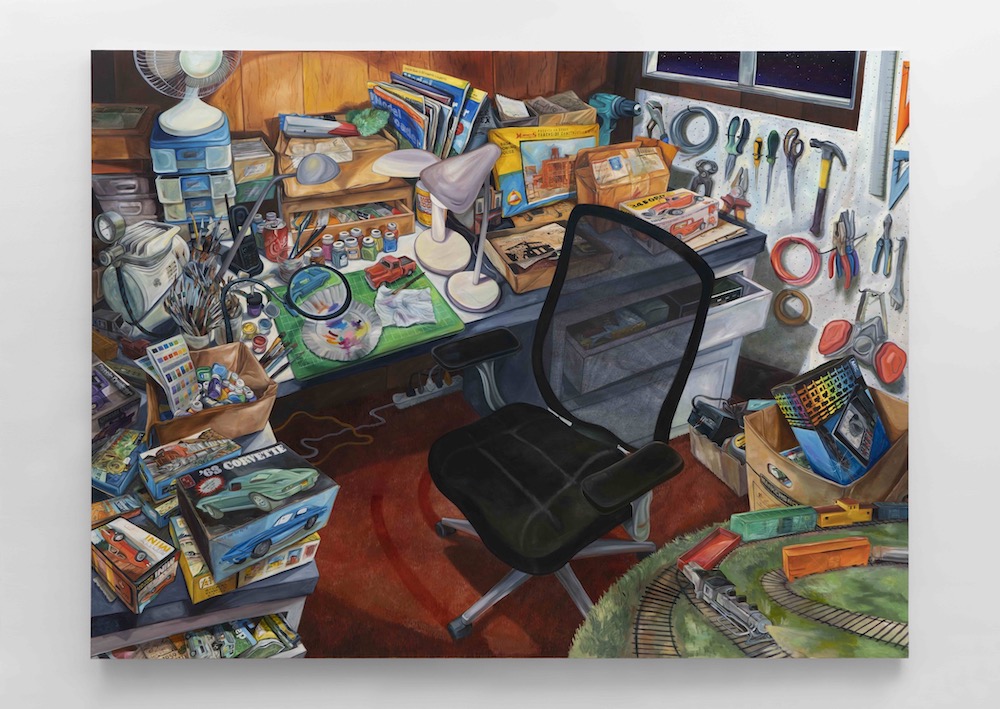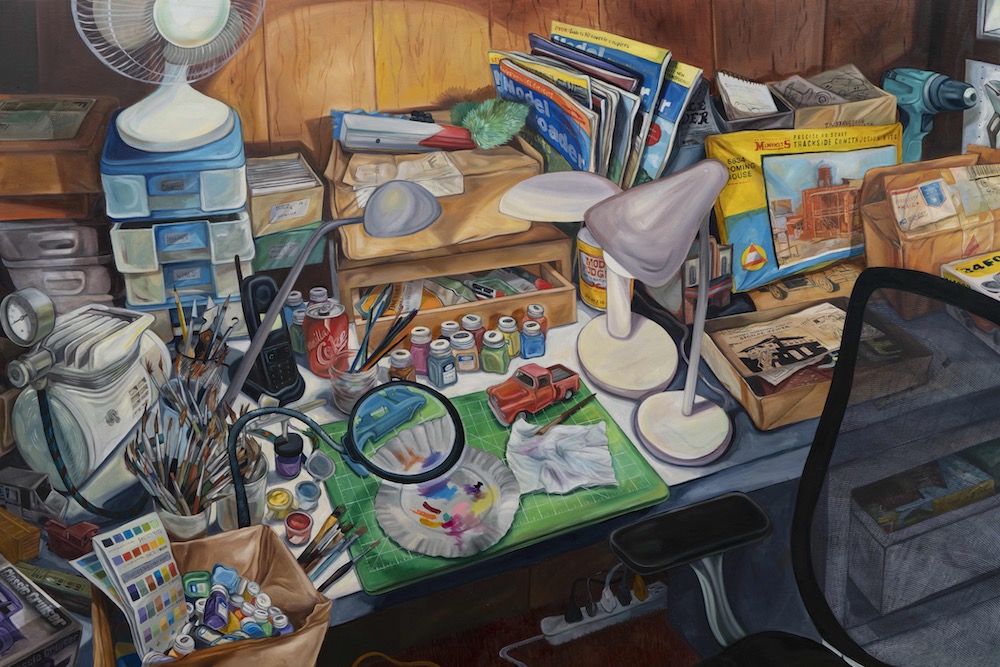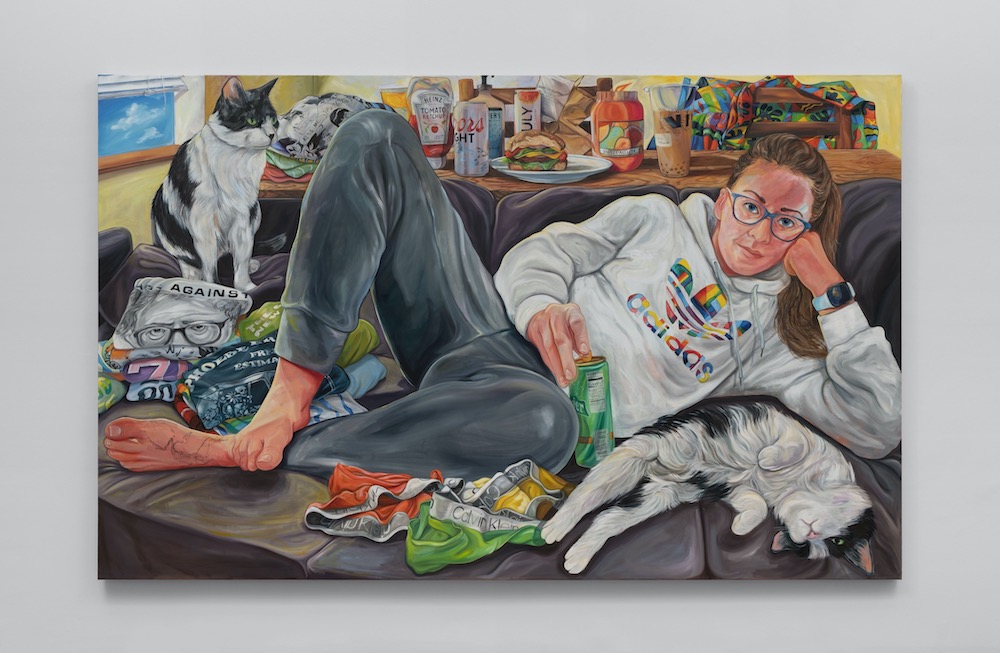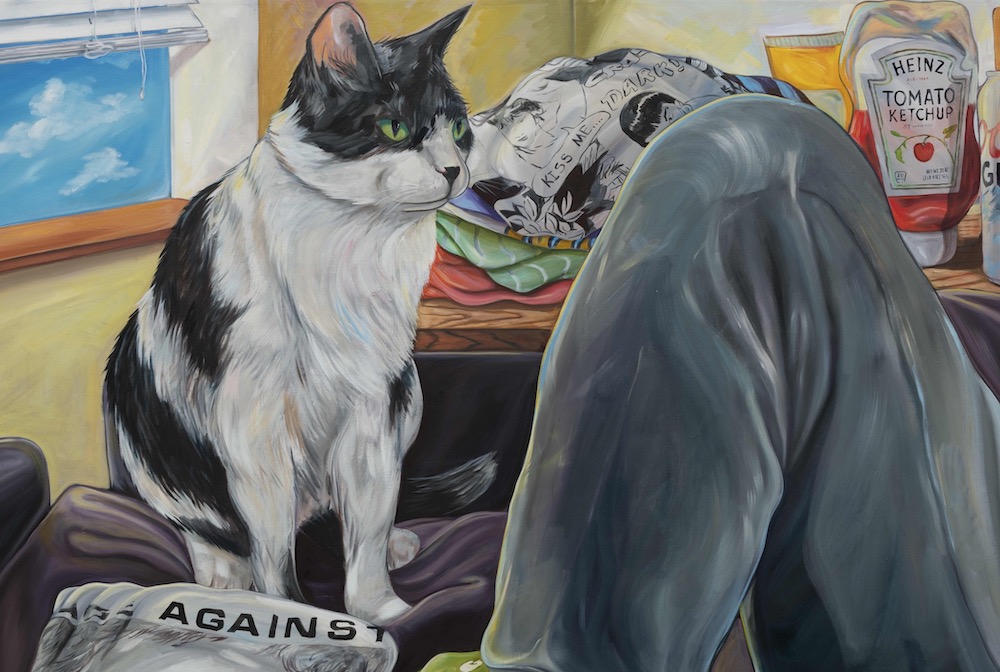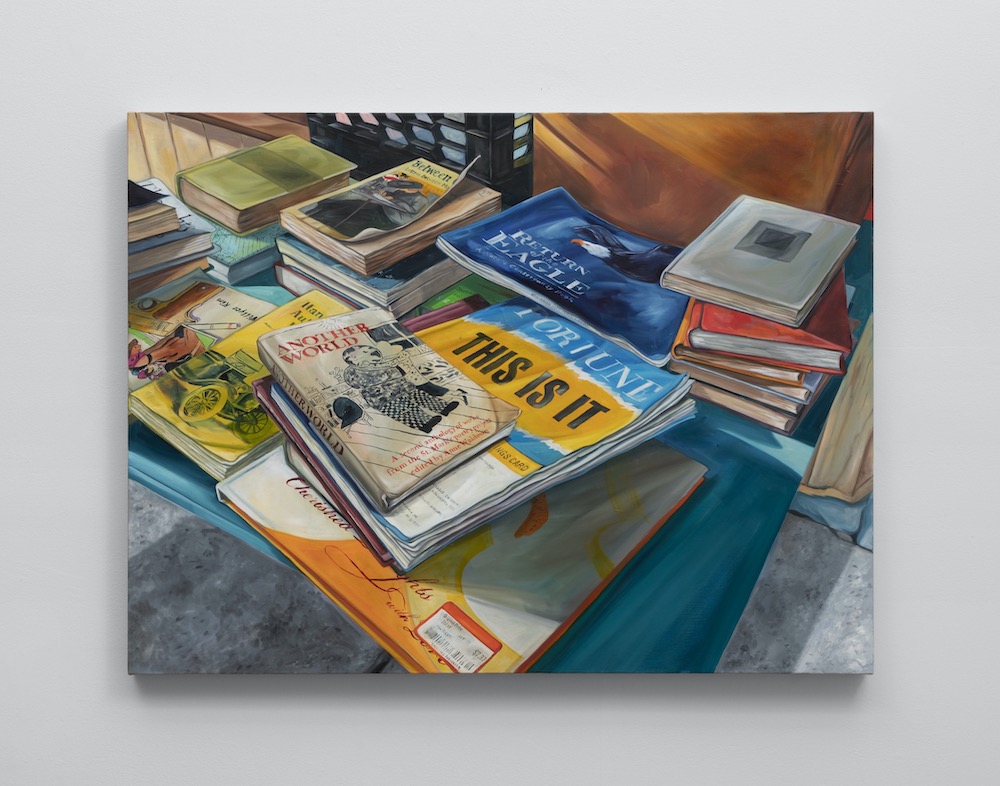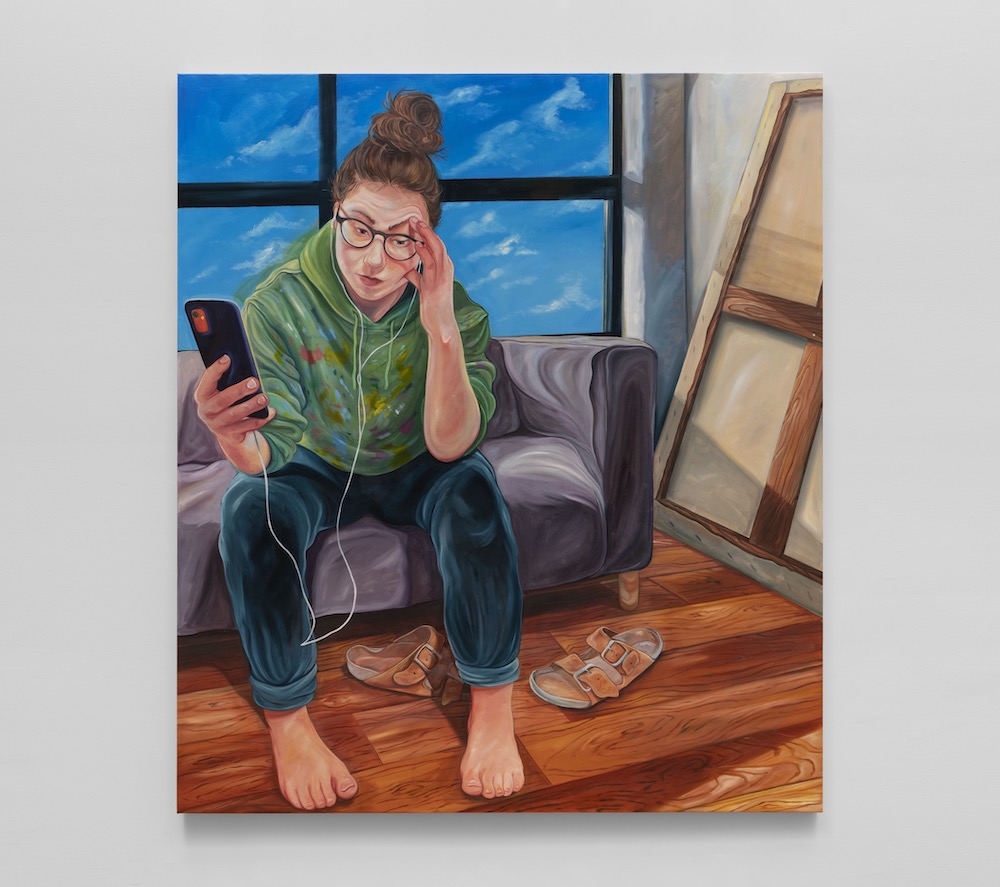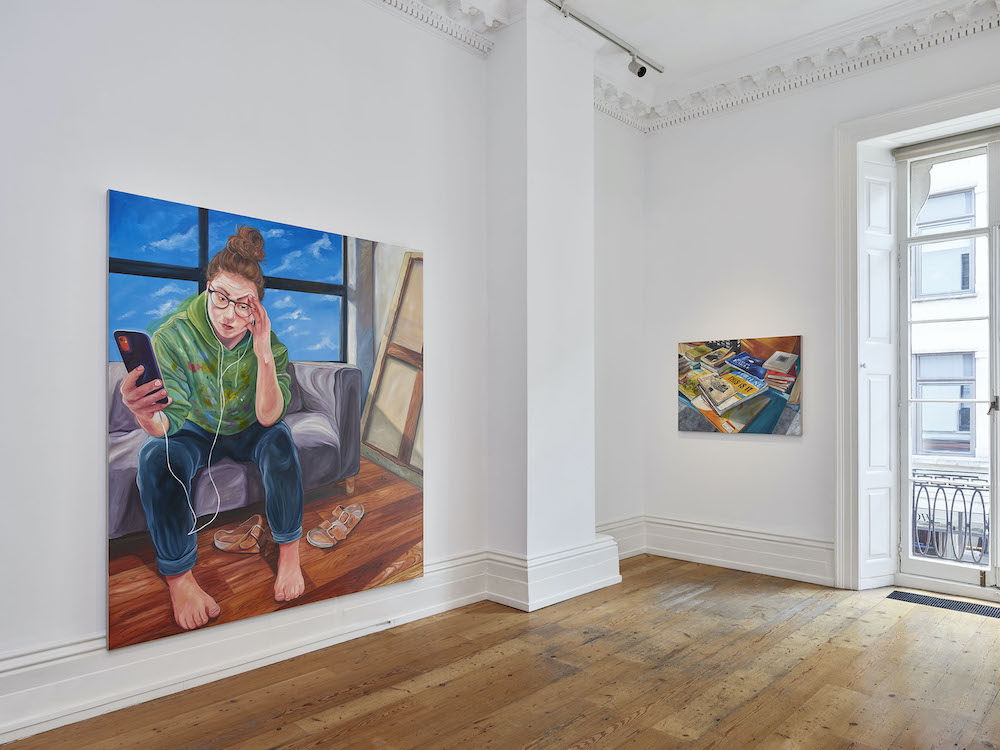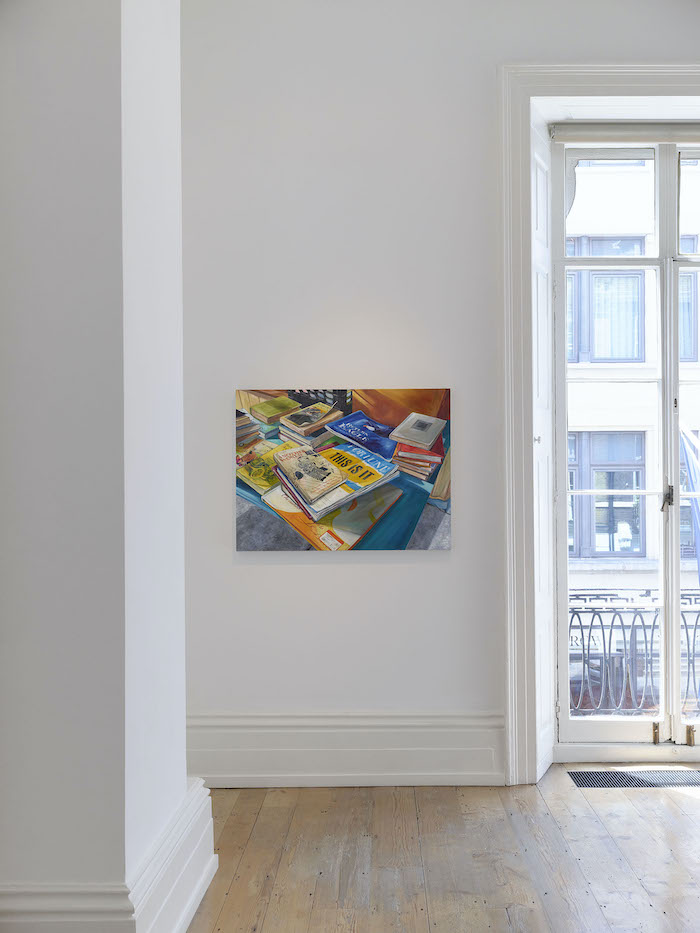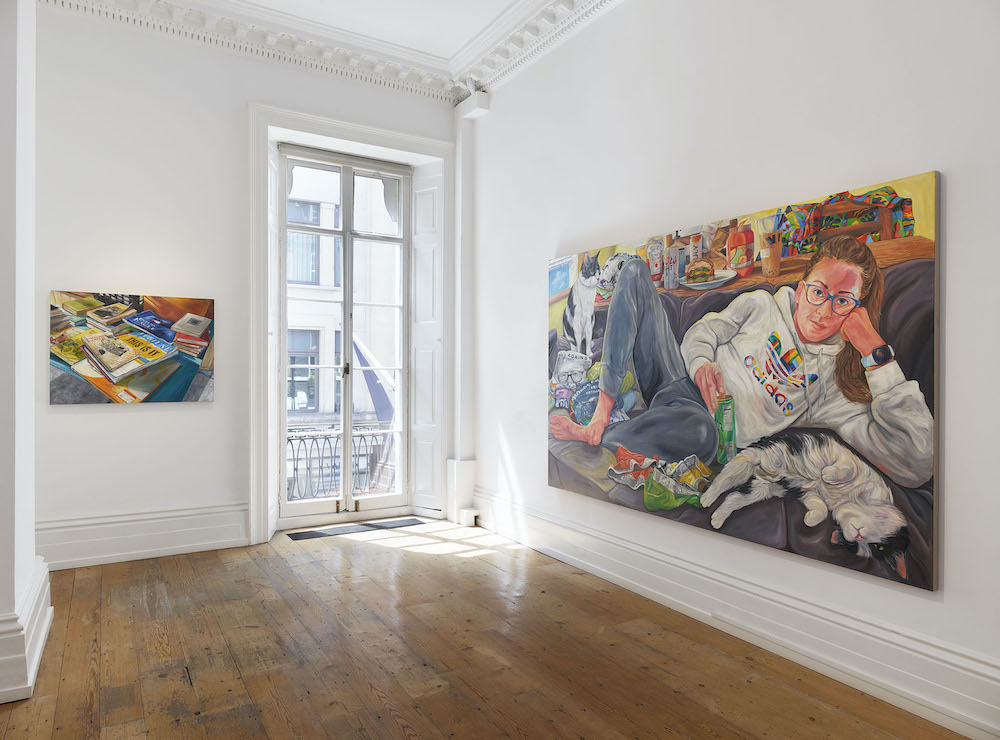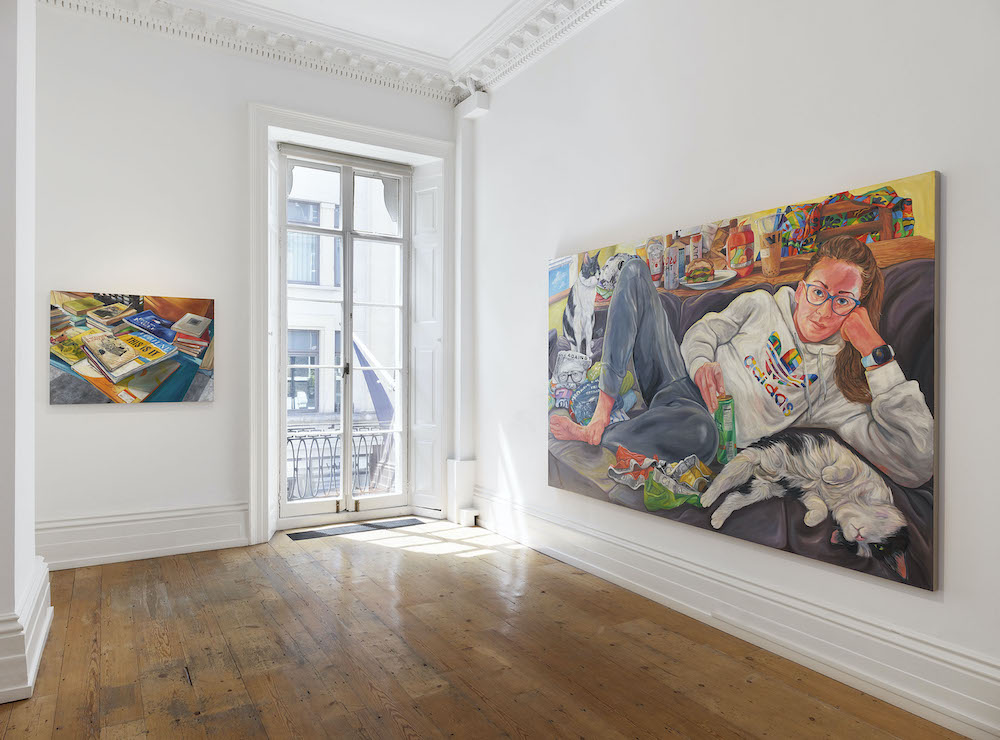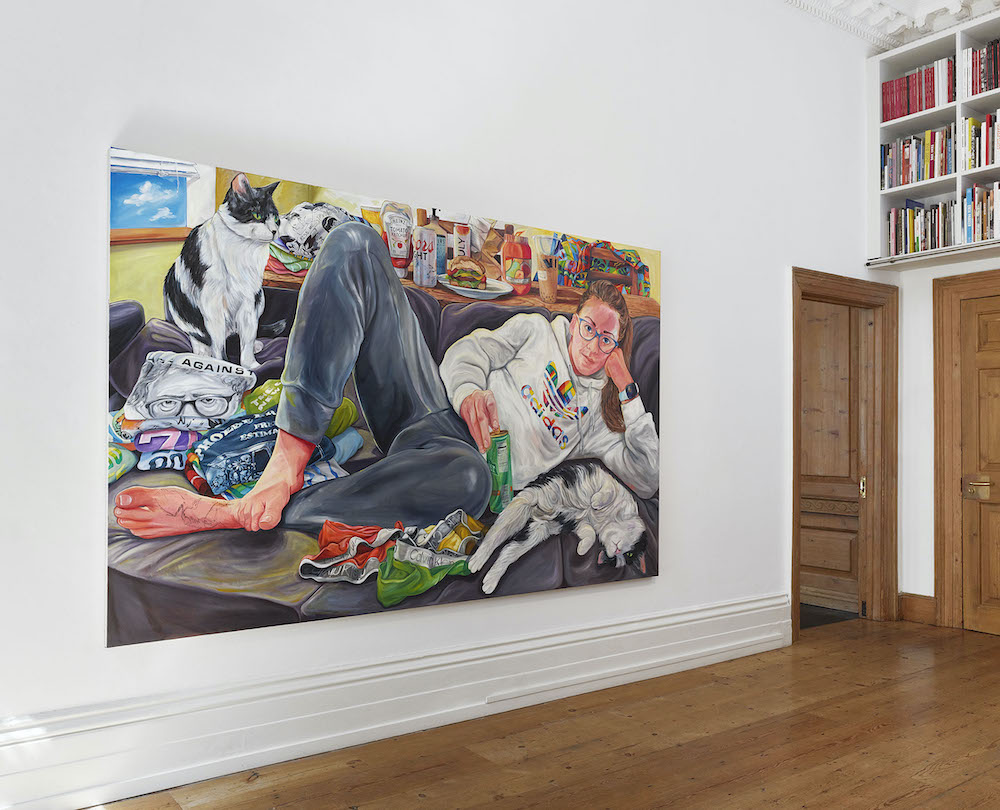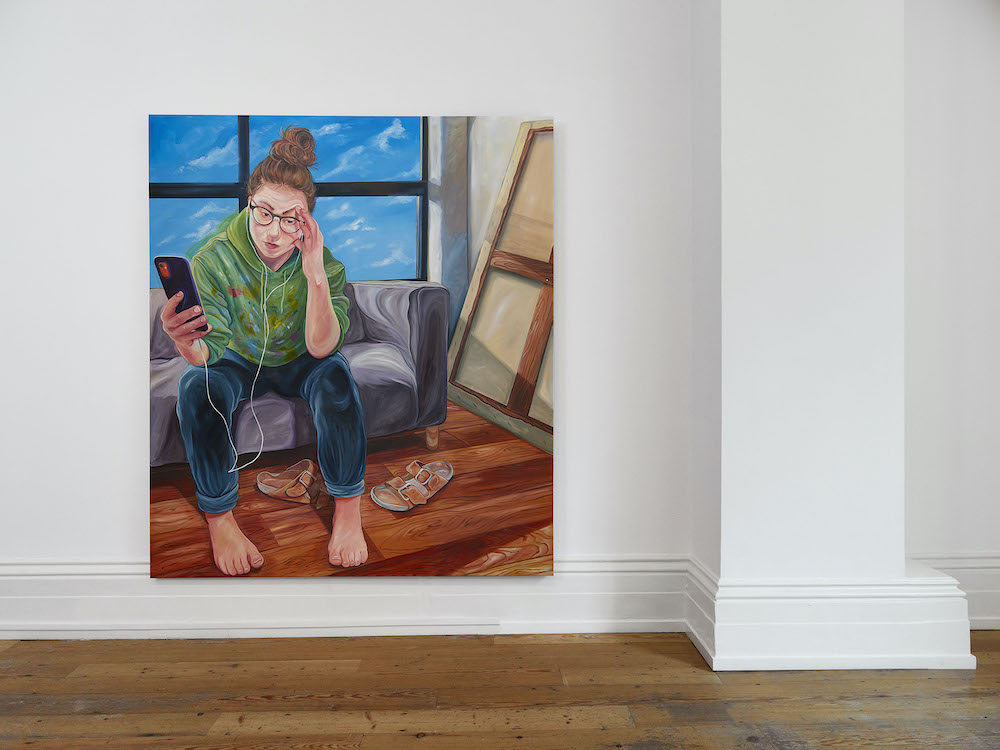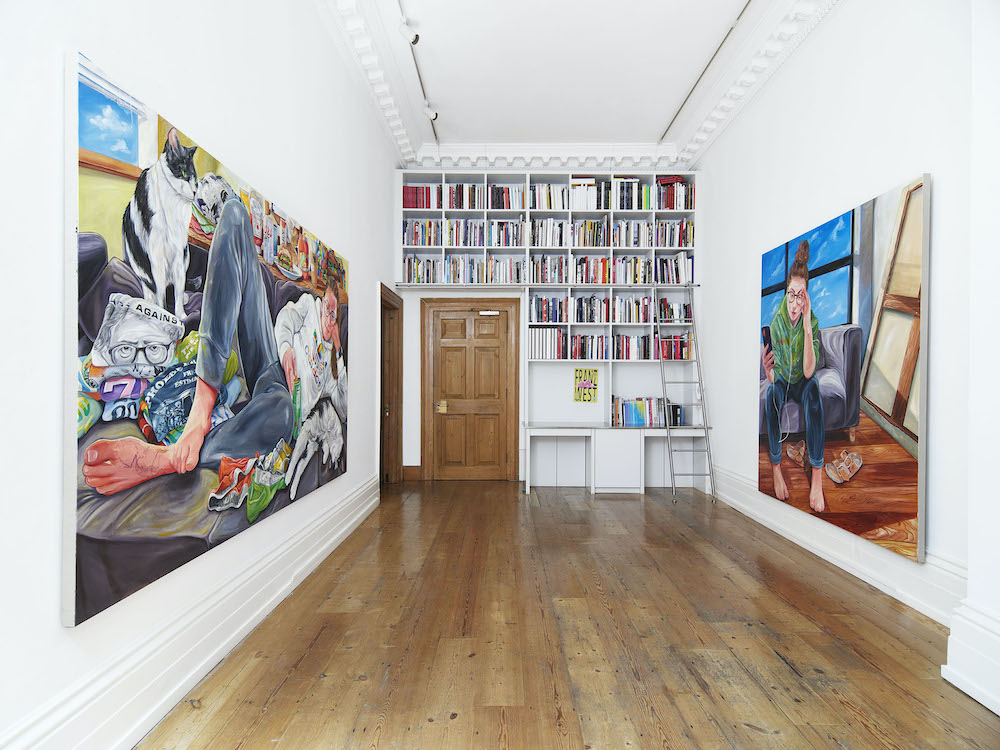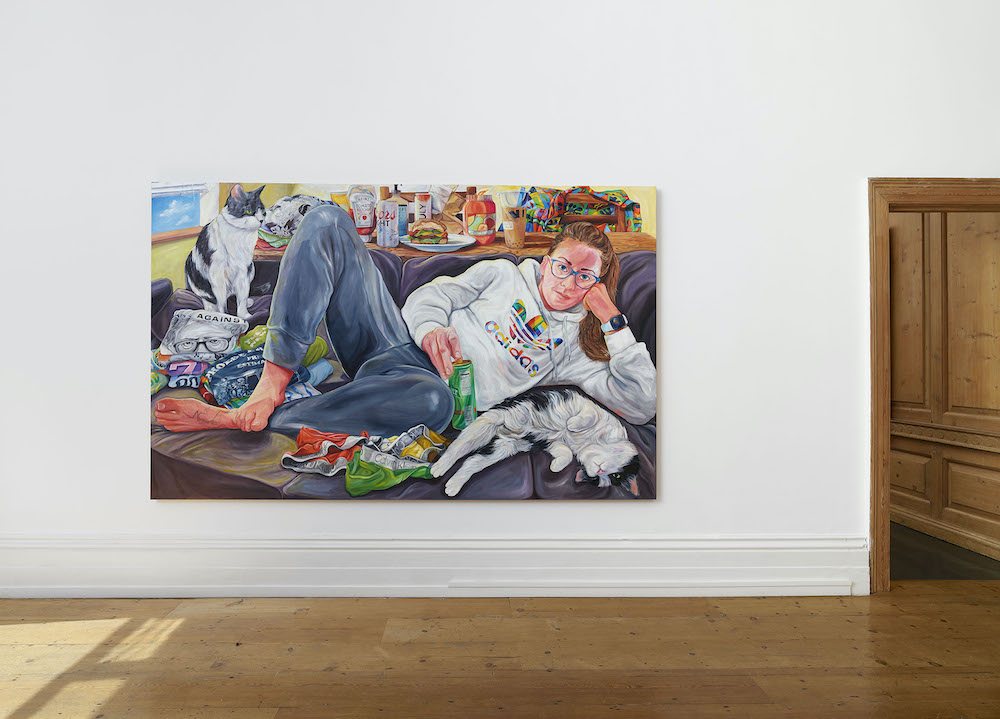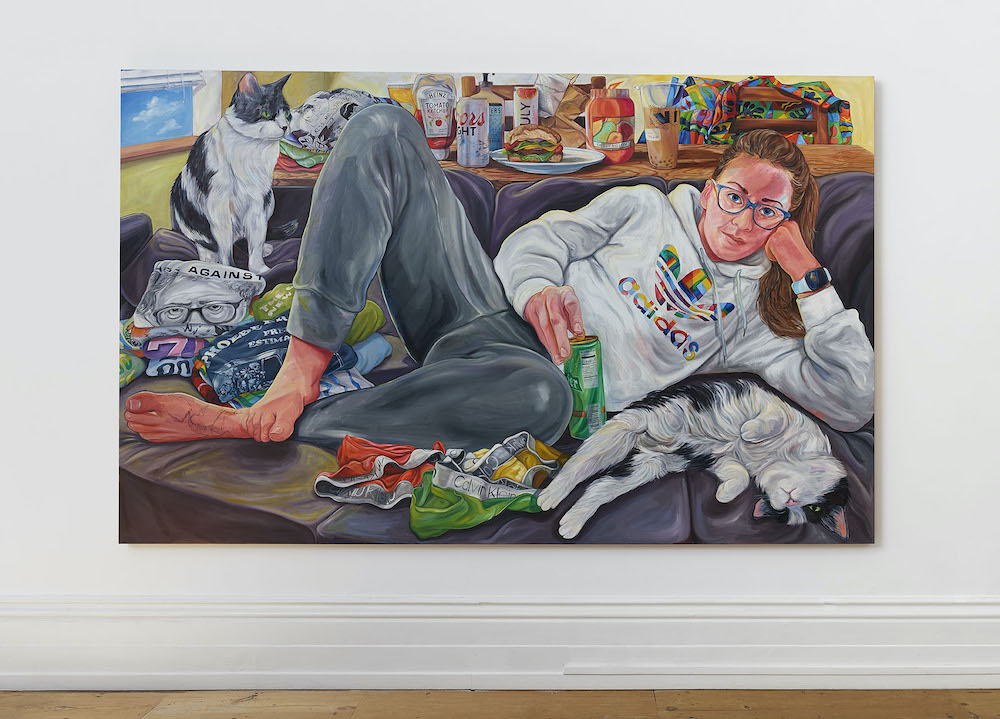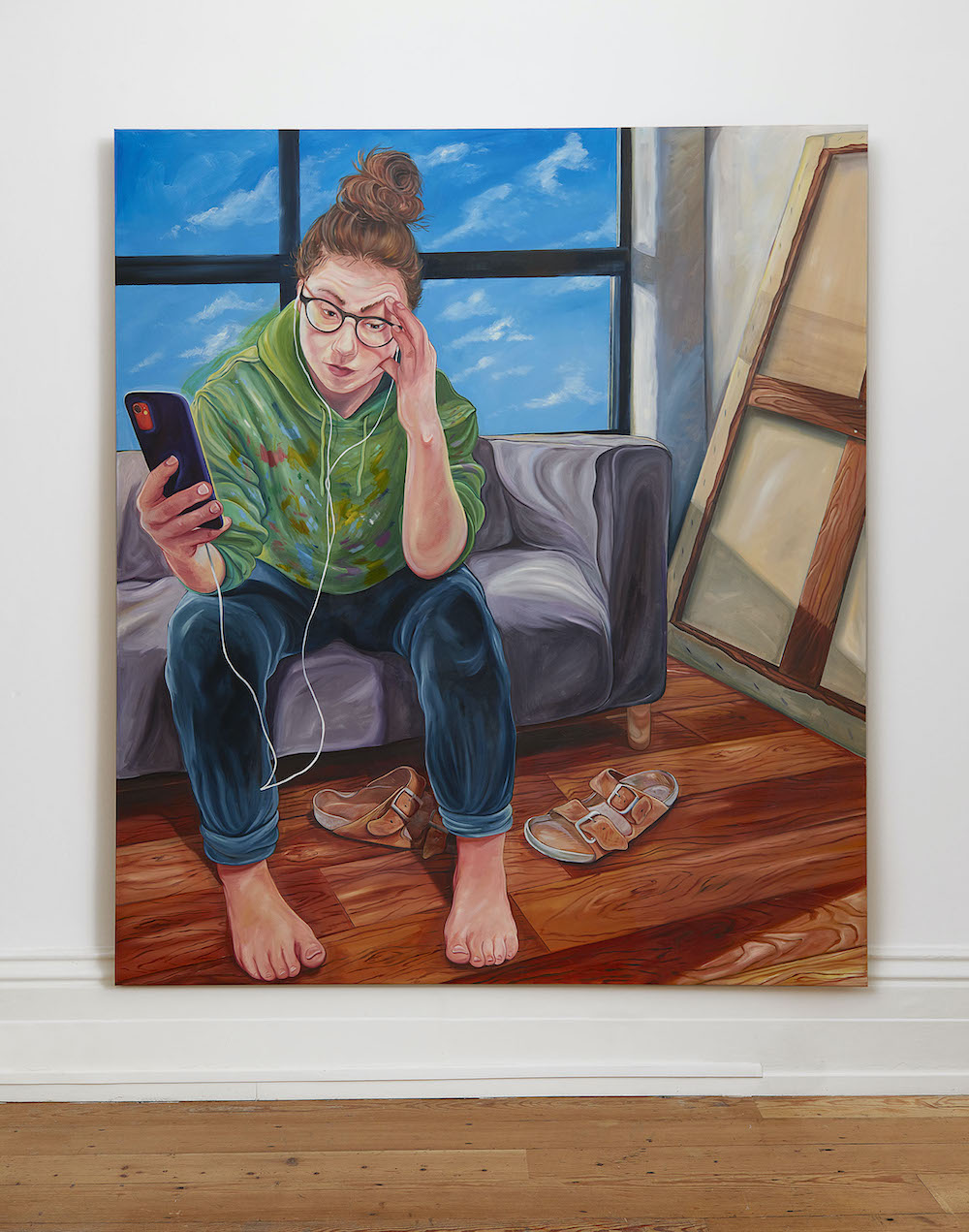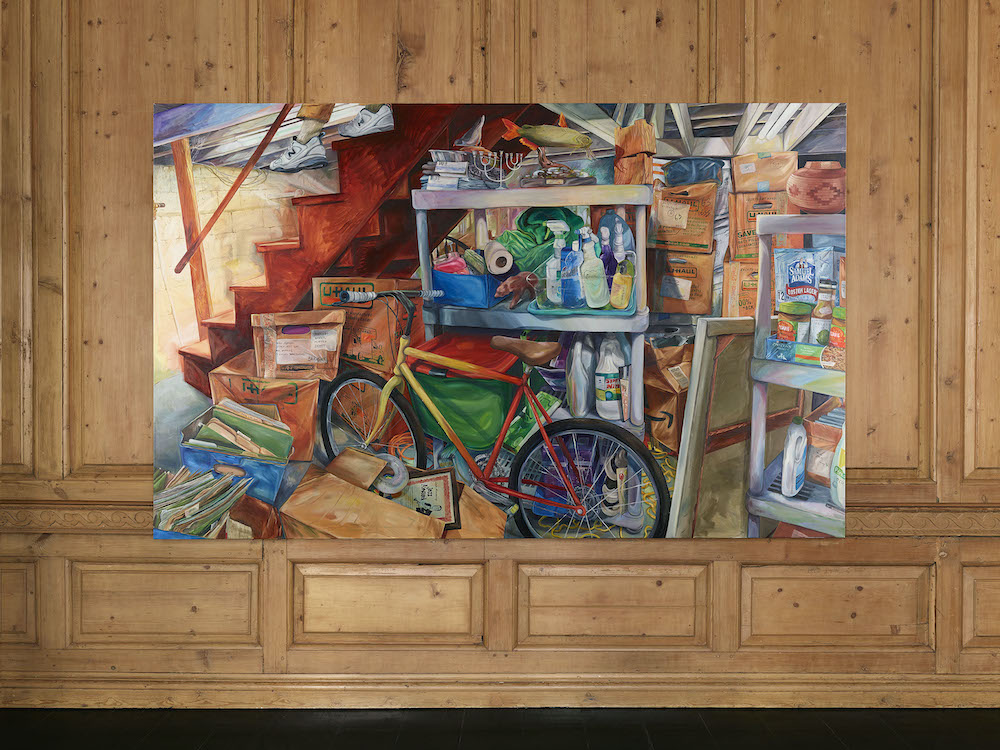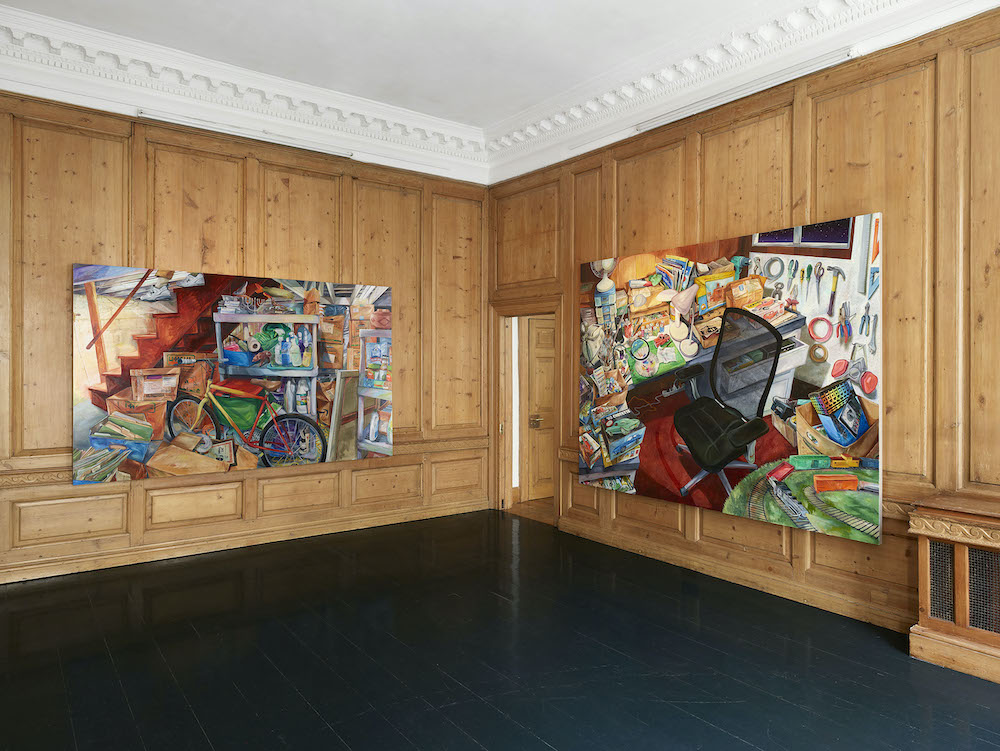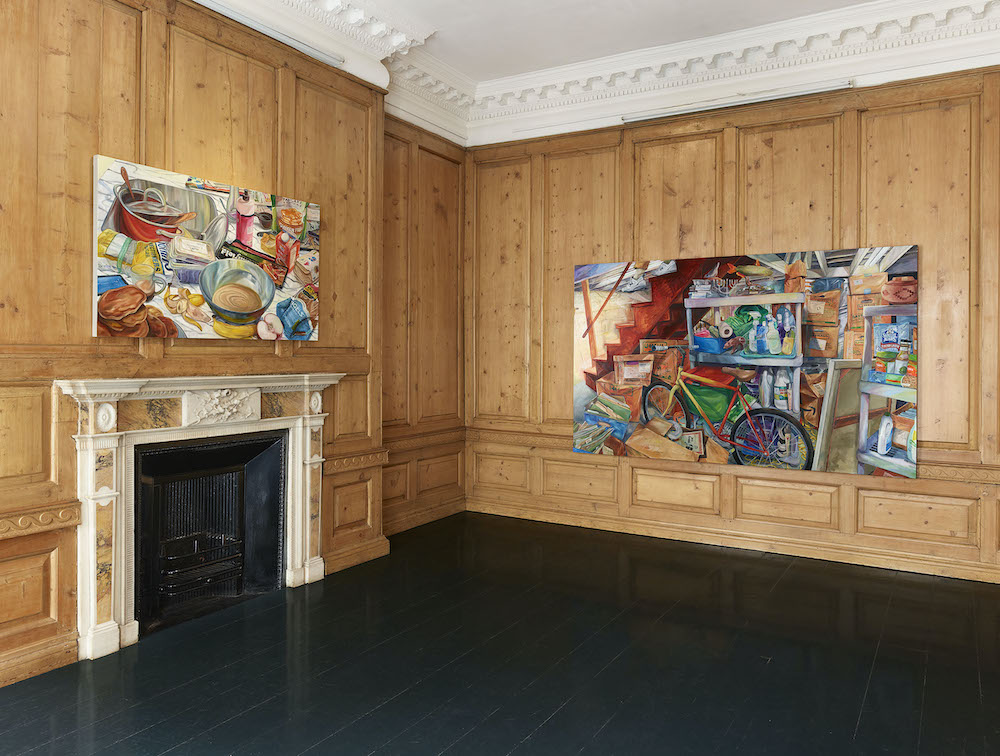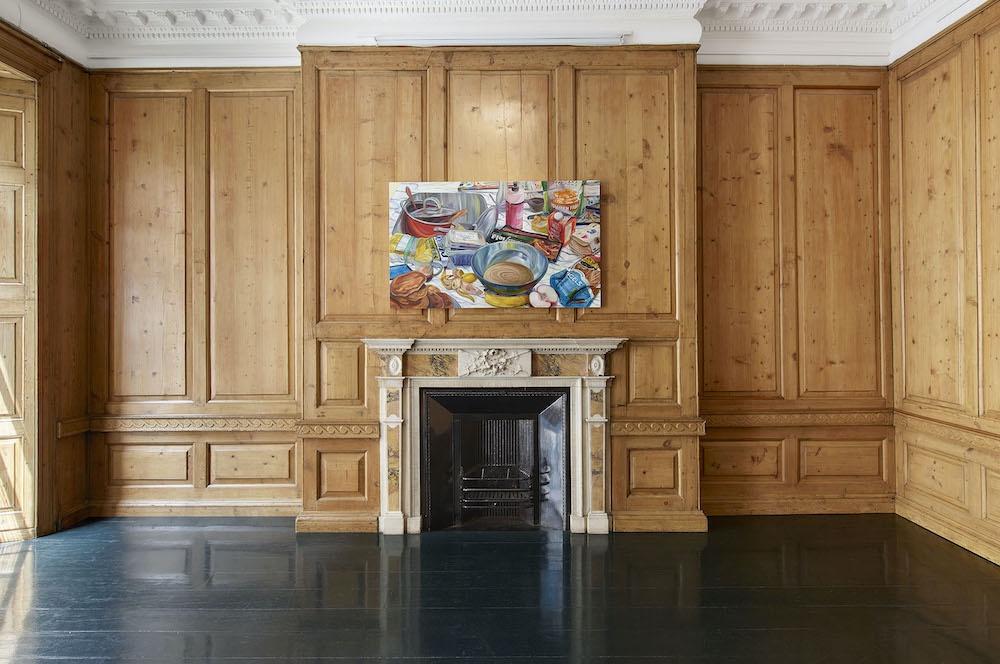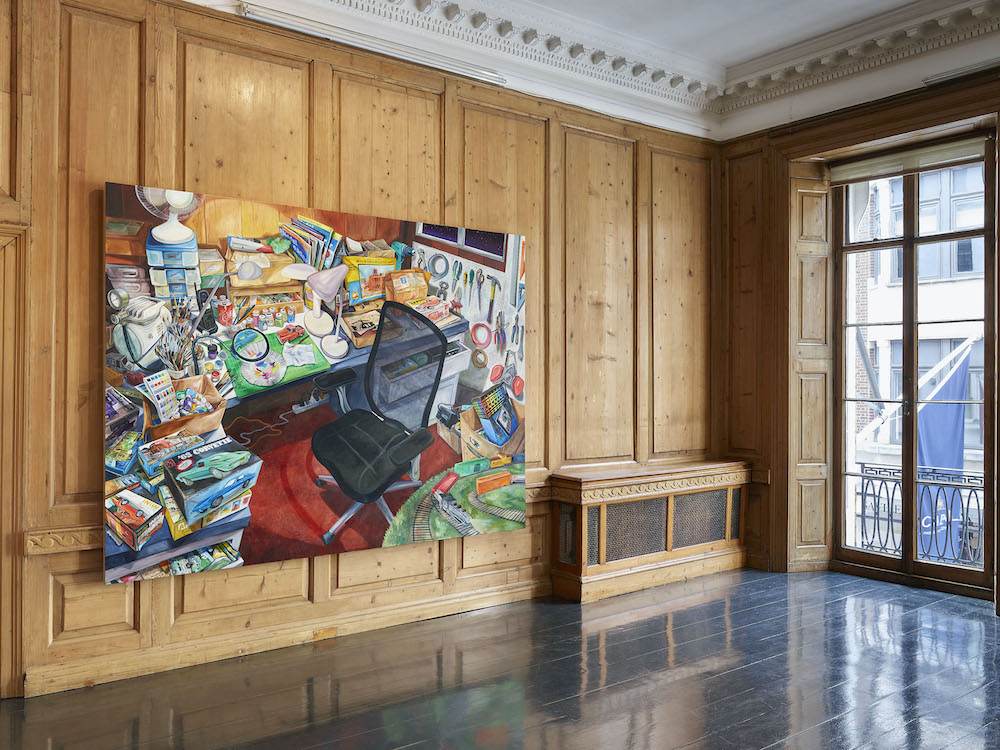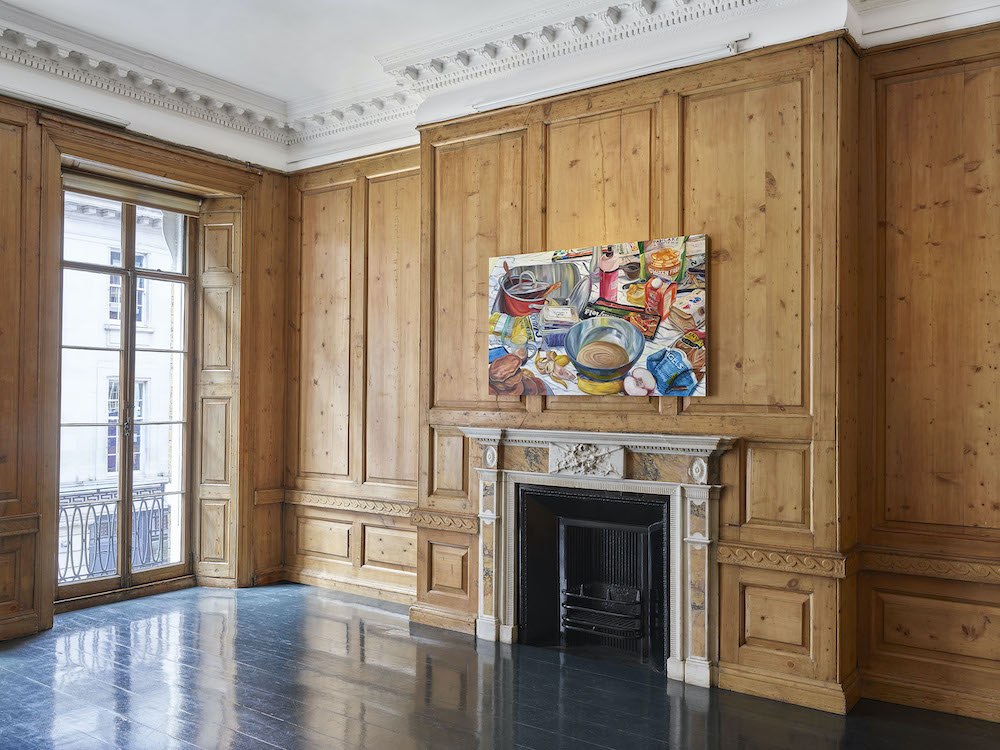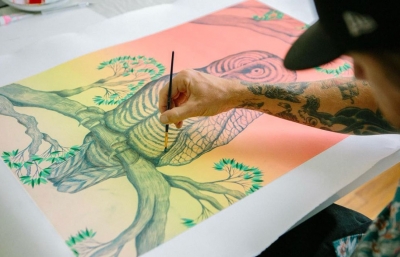Almost one year to the date since her last solo show with Nino Mier in LA, Rebecca Ness will be opening her London debut with Carl Kostyál on June 17th. Presenting a new body of 6 big-scale oil paintings, Windows and Worlds feels like a hyperfocused climax of the artist's interest in terms of referential images and conceptualizing her work.
"I think now I'm just primed and trying to find those moments of connection more, like out in the world of things that we can connect with," Ness told us in the interview we did with her for our Winter 2020 issue, as we talked about the perspective shift from her own personal concerns towards looking outwards. And indeed, ever since that consequential moment on April 19th, 2019, when she sat on a train across a stranger reading the newspaper, her work has transformed into somewhat of a visual diary evoking the aesthetic of I Spy books. To some extent composed and manufactured, but more often direct and honest, her recent oils on canvas and guaches on paper captured everything from the months of social distancing, over weird moments of studio life, to depictions of personal moments with her girlfriend.
"The paintings are also turning more escapist; I’m turning what was originally a painting of a thrift store, instead into a scene of an “ideal bunker” for riding out this weird time," Ness told us when we last checked with her back in April 2020 during our Art in Uncertain Times Series. This approach became a core of her current practice, as she elevated the portrayal of her surrounding to providing us a focused insight into the most personal, and literally locked away parts of life. Interested in personal belongings, objects which we associate with value, and in particular collecting mentality, for this show she has painted everything from her family basement, over a pile of books on sale, to the mundane, yet personally significant snapshot of her life. Careful about rendering and recreating all the labels, logos, cover graphics, patterns, signs of wear, and the ways they're organized, these cultural relics of a suburban Americana are telling stories within stories while being transformed into unconventional still lives of the present day. With weighty titles such as My Life, Escape, or Teletherapy revealing the importance of depicted moments and goods, and the show title suggesting the existence of even greater stories, Ness seems to be successfully connecting with "the world of things" while having a cheeky dig at the commercial art world along the way. —Sasha Bogojev

